

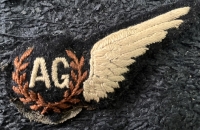
An Early Aircrew Europe “Wellington” Casualty.
9 Squadron, Royal Air Force.
To.
643275, Air Gunner, Sgt. HEDLEY BROWN.
With links to Stalag Luft III, The Great Escape & Oflag IVc, Colditz
An Enigmatic & Mysterious loss just 300 yds off Clacton beach
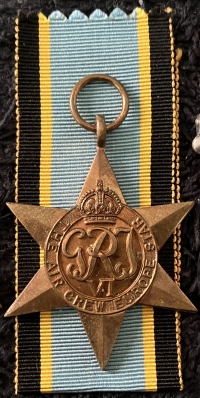
 [THE MEDALS]
1939-1945 Star
Aircrew Europe Star
War Medal 1939-1945
[THE LOSS OF WELLINGTON Mk III, X3398 WS- ]
-15:32 on 15th February 1942-
(A Very Strange Affair)
This at first seemingly quite normal loss during a winter training flight has actually turned out to be anything but “normal”. To begin with there were three extra crewmen on this aircraft which unusually had seven crew on the day of the crash, rather than the normal four.
The three extra crew included an Army Captain G.R. BUCK of The Royal Artillery, who was acting as an Air Gunner and sadly killed in the crash. The other two supernumerary crewmen (both of who survived the crash) were Sgt W.E. McCARTNEY & Sgt E. ONIONS. R.A.F.
Both of whom were taken to Clacton Hospital.
Local observers of 8 Group, Royal Observer Corps apparently filed a report on the incident, but very oddly indeed there is no surviving record, and even more oddly no trace of this sortie appears in the 9 Squadron Operations Book. …..and apparently there were no recorded statements made by the two surviving crewmen.
[THE MEDALS]
1939-1945 Star
Aircrew Europe Star
War Medal 1939-1945
[THE LOSS OF WELLINGTON Mk III, X3398 WS- ]
-15:32 on 15th February 1942-
(A Very Strange Affair)
This at first seemingly quite normal loss during a winter training flight has actually turned out to be anything but “normal”. To begin with there were three extra crewmen on this aircraft which unusually had seven crew on the day of the crash, rather than the normal four.
The three extra crew included an Army Captain G.R. BUCK of The Royal Artillery, who was acting as an Air Gunner and sadly killed in the crash. The other two supernumerary crewmen (both of who survived the crash) were Sgt W.E. McCARTNEY & Sgt E. ONIONS. R.A.F.
Both of whom were taken to Clacton Hospital.
Local observers of 8 Group, Royal Observer Corps apparently filed a report on the incident, but very oddly indeed there is no surviving record, and even more oddly no trace of this sortie appears in the 9 Squadron Operations Book. …..and apparently there were no recorded statements made by the two surviving crewmen.
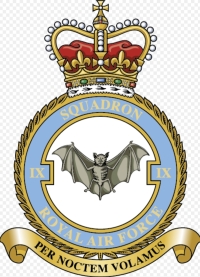
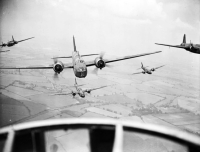 It’s as if all the records have vanished.
It is our opinion that due to some unknown set of circumstances surrounding this flight, and its loss within British airspace, that all details were suppressed on M.O.D. instructions. We feel that the most probable cause of the loss and its “vanishment” from the records was that the loss was due to clandestine enemy action by a German Luftwaffe intruder aircraft that just got lucky.
As a training flight in mid-February and with the potential for low cloud and poor weather en-route, the aircraft’s track would always have been very close to the coast, in sight of land, and just would not have been far out at sea or anywhere near the enemy coast due this very risk of enemy action.
It’s as if all the records have vanished.
It is our opinion that due to some unknown set of circumstances surrounding this flight, and its loss within British airspace, that all details were suppressed on M.O.D. instructions. We feel that the most probable cause of the loss and its “vanishment” from the records was that the loss was due to clandestine enemy action by a German Luftwaffe intruder aircraft that just got lucky.
As a training flight in mid-February and with the potential for low cloud and poor weather en-route, the aircraft’s track would always have been very close to the coast, in sight of land, and just would not have been far out at sea or anywhere near the enemy coast due this very risk of enemy action.
 RAF Honington the aircraft’s base is only 50 miles NNW of Clacton so this would typically have been a circular cross country sortie.
Had the pilot still been in control of the aircraft, perhaps after a sudden loss of power at a couple of thousand feet, and being in sight of land, he would, from a normal operational height clearly have attempted a forced landing on the coast.
The description of this “sudden” loss is apparently described as a “ditching” rather than a crash. This tends to describe that the aircraft, although clearly having lost power and altitude, and probably being well trimmed, but without a functional pilot, may well have almost landed itself in a gliding attitude onto the water.
This would perhaps suggest that the pilot and crew were either already dead or incapacitated while in flight due to an enemy attack.
Had the aircraft come straight down vertically from any altitude and hit the water in a “crash” scenario, it’s very very doubtful that there would have been the two surviving airmen.
Also, as the bodies of all five deceased crewmen were recovered from the downed aircraft for burial, it yet again points to a ditching in shallow water rather than a crash from altitude. This whole incident needs some more serious investigation and would make an excellent research project.
“Somebody knows what actually happened to this aircraft”
[THE FAMOUS ESCAPING CONNECTION]
“STALAG LUFT III” & -THE GREAT ESCAPE-
Interestingly, two now famous WW2 escapers served with 9 Squadron. The first was Flt/Lt Les “Cookie” Long, a Wellington Pilot who was shot down on 27th March 1941. As a talented & experienced tunneller, Long played a major role in “The Great Escape” from Stalag Luft III, Sagan. Sadly, Les Long was one of “The Fifty” Great Escapers who were shot by the Gestapo on 30th April 1944.
[OFLAG IVc COLDITZ]
“The Tea Chest Escape”
Also, Dominic Bruce OBE, M.C. AFM, who was famously known in Oflag IVc COLDITZ as, “the medium sized man” was the central figure in the famous “tea chest escape”. He also served with 9 squadron as an Air Gunner being shot down on 9th June 1941. The incredible Mr Bruce died in Richmond, Surrey in 2000, aged 85.
Both of these fine RAF officers were totally incorrigible escapers who epitomised the courage and the finest attitudes of The Royal Air Force in that it’s never acceptable under any circumstances to quit”
PER ARDVA AD ASTRA
[ALSO INCLUDED]
RAF Honington the aircraft’s base is only 50 miles NNW of Clacton so this would typically have been a circular cross country sortie.
Had the pilot still been in control of the aircraft, perhaps after a sudden loss of power at a couple of thousand feet, and being in sight of land, he would, from a normal operational height clearly have attempted a forced landing on the coast.
The description of this “sudden” loss is apparently described as a “ditching” rather than a crash. This tends to describe that the aircraft, although clearly having lost power and altitude, and probably being well trimmed, but without a functional pilot, may well have almost landed itself in a gliding attitude onto the water.
This would perhaps suggest that the pilot and crew were either already dead or incapacitated while in flight due to an enemy attack.
Had the aircraft come straight down vertically from any altitude and hit the water in a “crash” scenario, it’s very very doubtful that there would have been the two surviving airmen.
Also, as the bodies of all five deceased crewmen were recovered from the downed aircraft for burial, it yet again points to a ditching in shallow water rather than a crash from altitude. This whole incident needs some more serious investigation and would make an excellent research project.
“Somebody knows what actually happened to this aircraft”
[THE FAMOUS ESCAPING CONNECTION]
“STALAG LUFT III” & -THE GREAT ESCAPE-
Interestingly, two now famous WW2 escapers served with 9 Squadron. The first was Flt/Lt Les “Cookie” Long, a Wellington Pilot who was shot down on 27th March 1941. As a talented & experienced tunneller, Long played a major role in “The Great Escape” from Stalag Luft III, Sagan. Sadly, Les Long was one of “The Fifty” Great Escapers who were shot by the Gestapo on 30th April 1944.
[OFLAG IVc COLDITZ]
“The Tea Chest Escape”
Also, Dominic Bruce OBE, M.C. AFM, who was famously known in Oflag IVc COLDITZ as, “the medium sized man” was the central figure in the famous “tea chest escape”. He also served with 9 squadron as an Air Gunner being shot down on 9th June 1941. The incredible Mr Bruce died in Richmond, Surrey in 2000, aged 85.
Both of these fine RAF officers were totally incorrigible escapers who epitomised the courage and the finest attitudes of The Royal Air Force in that it’s never acceptable under any circumstances to quit”
PER ARDVA AD ASTRA
[ALSO INCLUDED]
 All medals and their crenelated RAF ribbons are in gem mint state and are absolutely as issued in their original addressed Air Ministry cardboard box of issue, together with the officially named condolence slip to Sergeant H. Brown.
All medals and their crenelated RAF ribbons are in gem mint state and are absolutely as issued in their original addressed Air Ministry cardboard box of issue, together with the officially named condolence slip to Sergeant H. Brown.



 Also included is an original WW2 R.A.F. “AG” Brevet wing,
along with the named box of issue, the named condolence slip and an old original newspaper cutting detailing the loss of Sgt Brown.
Hedley who was just 20, was the son of Arthur & Doris Brown. The medals were sent to Mr A. Brown, father, at the family home at.
Trehaverock Cottage,
St, Endellion,
Port Isaac,
Bodmin,
Cornwall.
Also included is an original WW2 R.A.F. “AG” Brevet wing,
along with the named box of issue, the named condolence slip and an old original newspaper cutting detailing the loss of Sgt Brown.
Hedley who was just 20, was the son of Arthur & Doris Brown. The medals were sent to Mr A. Brown, father, at the family home at.
Trehaverock Cottage,
St, Endellion,
Port Isaac,
Bodmin,
Cornwall.
 [NOTE]
Trehaverock Cottage is now a very well known and extensively advertised Cornish rental property but during WW2 it was the family home of the Brown family and being built in the early 1600’s was an ecclesiastical property which lies adjacent to the churchyard which holds the private grave of Sgt Hedley Brown upon which the Brown family have erected a most magnificent headstone which features a large & hand carved Air Gunner’s “AG” Wing Brevet in blue granite.
[NOTE]
Trehaverock Cottage is now a very well known and extensively advertised Cornish rental property but during WW2 it was the family home of the Brown family and being built in the early 1600’s was an ecclesiastical property which lies adjacent to the churchyard which holds the private grave of Sgt Hedley Brown upon which the Brown family have erected a most magnificent headstone which features a large & hand carved Air Gunner’s “AG” Wing Brevet in blue granite.
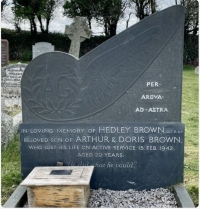 An Excellent & Highly Emotive Group with Very Unusual Surrounding Circumstances, which are well worthy of much further in depth research.
£995
An Excellent & Highly Emotive Group with Very Unusual Surrounding Circumstances, which are well worthy of much further in depth research.
£995

 [THE MEDALS]
1939-1945 Star
Aircrew Europe Star
War Medal 1939-1945
[THE LOSS OF WELLINGTON Mk III, X3398 WS- ]
-15:32 on 15th February 1942-
(A Very Strange Affair)
This at first seemingly quite normal loss during a winter training flight has actually turned out to be anything but “normal”. To begin with there were three extra crewmen on this aircraft which unusually had seven crew on the day of the crash, rather than the normal four.
The three extra crew included an Army Captain G.R. BUCK of The Royal Artillery, who was acting as an Air Gunner and sadly killed in the crash. The other two supernumerary crewmen (both of who survived the crash) were Sgt W.E. McCARTNEY & Sgt E. ONIONS. R.A.F.
Both of whom were taken to Clacton Hospital.
Local observers of 8 Group, Royal Observer Corps apparently filed a report on the incident, but very oddly indeed there is no surviving record, and even more oddly no trace of this sortie appears in the 9 Squadron Operations Book. …..and apparently there were no recorded statements made by the two surviving crewmen.
[THE MEDALS]
1939-1945 Star
Aircrew Europe Star
War Medal 1939-1945
[THE LOSS OF WELLINGTON Mk III, X3398 WS- ]
-15:32 on 15th February 1942-
(A Very Strange Affair)
This at first seemingly quite normal loss during a winter training flight has actually turned out to be anything but “normal”. To begin with there were three extra crewmen on this aircraft which unusually had seven crew on the day of the crash, rather than the normal four.
The three extra crew included an Army Captain G.R. BUCK of The Royal Artillery, who was acting as an Air Gunner and sadly killed in the crash. The other two supernumerary crewmen (both of who survived the crash) were Sgt W.E. McCARTNEY & Sgt E. ONIONS. R.A.F.
Both of whom were taken to Clacton Hospital.
Local observers of 8 Group, Royal Observer Corps apparently filed a report on the incident, but very oddly indeed there is no surviving record, and even more oddly no trace of this sortie appears in the 9 Squadron Operations Book. …..and apparently there were no recorded statements made by the two surviving crewmen.

 It’s as if all the records have vanished.
It is our opinion that due to some unknown set of circumstances surrounding this flight, and its loss within British airspace, that all details were suppressed on M.O.D. instructions. We feel that the most probable cause of the loss and its “vanishment” from the records was that the loss was due to clandestine enemy action by a German Luftwaffe intruder aircraft that just got lucky.
As a training flight in mid-February and with the potential for low cloud and poor weather en-route, the aircraft’s track would always have been very close to the coast, in sight of land, and just would not have been far out at sea or anywhere near the enemy coast due this very risk of enemy action.
It’s as if all the records have vanished.
It is our opinion that due to some unknown set of circumstances surrounding this flight, and its loss within British airspace, that all details were suppressed on M.O.D. instructions. We feel that the most probable cause of the loss and its “vanishment” from the records was that the loss was due to clandestine enemy action by a German Luftwaffe intruder aircraft that just got lucky.
As a training flight in mid-February and with the potential for low cloud and poor weather en-route, the aircraft’s track would always have been very close to the coast, in sight of land, and just would not have been far out at sea or anywhere near the enemy coast due this very risk of enemy action.
 RAF Honington the aircraft’s base is only 50 miles NNW of Clacton so this would typically have been a circular cross country sortie.
Had the pilot still been in control of the aircraft, perhaps after a sudden loss of power at a couple of thousand feet, and being in sight of land, he would, from a normal operational height clearly have attempted a forced landing on the coast.
The description of this “sudden” loss is apparently described as a “ditching” rather than a crash. This tends to describe that the aircraft, although clearly having lost power and altitude, and probably being well trimmed, but without a functional pilot, may well have almost landed itself in a gliding attitude onto the water.
This would perhaps suggest that the pilot and crew were either already dead or incapacitated while in flight due to an enemy attack.
Had the aircraft come straight down vertically from any altitude and hit the water in a “crash” scenario, it’s very very doubtful that there would have been the two surviving airmen.
Also, as the bodies of all five deceased crewmen were recovered from the downed aircraft for burial, it yet again points to a ditching in shallow water rather than a crash from altitude. This whole incident needs some more serious investigation and would make an excellent research project.
“Somebody knows what actually happened to this aircraft”
[THE FAMOUS ESCAPING CONNECTION]
“STALAG LUFT III” & -THE GREAT ESCAPE-
Interestingly, two now famous WW2 escapers served with 9 Squadron. The first was Flt/Lt Les “Cookie” Long, a Wellington Pilot who was shot down on 27th March 1941. As a talented & experienced tunneller, Long played a major role in “The Great Escape” from Stalag Luft III, Sagan. Sadly, Les Long was one of “The Fifty” Great Escapers who were shot by the Gestapo on 30th April 1944.
[OFLAG IVc COLDITZ]
“The Tea Chest Escape”
Also, Dominic Bruce OBE, M.C. AFM, who was famously known in Oflag IVc COLDITZ as, “the medium sized man” was the central figure in the famous “tea chest escape”. He also served with 9 squadron as an Air Gunner being shot down on 9th June 1941. The incredible Mr Bruce died in Richmond, Surrey in 2000, aged 85.
Both of these fine RAF officers were totally incorrigible escapers who epitomised the courage and the finest attitudes of The Royal Air Force in that it’s never acceptable under any circumstances to quit”
PER ARDVA AD ASTRA
[ALSO INCLUDED]
RAF Honington the aircraft’s base is only 50 miles NNW of Clacton so this would typically have been a circular cross country sortie.
Had the pilot still been in control of the aircraft, perhaps after a sudden loss of power at a couple of thousand feet, and being in sight of land, he would, from a normal operational height clearly have attempted a forced landing on the coast.
The description of this “sudden” loss is apparently described as a “ditching” rather than a crash. This tends to describe that the aircraft, although clearly having lost power and altitude, and probably being well trimmed, but without a functional pilot, may well have almost landed itself in a gliding attitude onto the water.
This would perhaps suggest that the pilot and crew were either already dead or incapacitated while in flight due to an enemy attack.
Had the aircraft come straight down vertically from any altitude and hit the water in a “crash” scenario, it’s very very doubtful that there would have been the two surviving airmen.
Also, as the bodies of all five deceased crewmen were recovered from the downed aircraft for burial, it yet again points to a ditching in shallow water rather than a crash from altitude. This whole incident needs some more serious investigation and would make an excellent research project.
“Somebody knows what actually happened to this aircraft”
[THE FAMOUS ESCAPING CONNECTION]
“STALAG LUFT III” & -THE GREAT ESCAPE-
Interestingly, two now famous WW2 escapers served with 9 Squadron. The first was Flt/Lt Les “Cookie” Long, a Wellington Pilot who was shot down on 27th March 1941. As a talented & experienced tunneller, Long played a major role in “The Great Escape” from Stalag Luft III, Sagan. Sadly, Les Long was one of “The Fifty” Great Escapers who were shot by the Gestapo on 30th April 1944.
[OFLAG IVc COLDITZ]
“The Tea Chest Escape”
Also, Dominic Bruce OBE, M.C. AFM, who was famously known in Oflag IVc COLDITZ as, “the medium sized man” was the central figure in the famous “tea chest escape”. He also served with 9 squadron as an Air Gunner being shot down on 9th June 1941. The incredible Mr Bruce died in Richmond, Surrey in 2000, aged 85.
Both of these fine RAF officers were totally incorrigible escapers who epitomised the courage and the finest attitudes of The Royal Air Force in that it’s never acceptable under any circumstances to quit”
PER ARDVA AD ASTRA
[ALSO INCLUDED]
 All medals and their crenelated RAF ribbons are in gem mint state and are absolutely as issued in their original addressed Air Ministry cardboard box of issue, together with the officially named condolence slip to Sergeant H. Brown.
All medals and their crenelated RAF ribbons are in gem mint state and are absolutely as issued in their original addressed Air Ministry cardboard box of issue, together with the officially named condolence slip to Sergeant H. Brown.



 Also included is an original WW2 R.A.F. “AG” Brevet wing,
along with the named box of issue, the named condolence slip and an old original newspaper cutting detailing the loss of Sgt Brown.
Hedley who was just 20, was the son of Arthur & Doris Brown. The medals were sent to Mr A. Brown, father, at the family home at.
Trehaverock Cottage,
St, Endellion,
Port Isaac,
Bodmin,
Cornwall.
Also included is an original WW2 R.A.F. “AG” Brevet wing,
along with the named box of issue, the named condolence slip and an old original newspaper cutting detailing the loss of Sgt Brown.
Hedley who was just 20, was the son of Arthur & Doris Brown. The medals were sent to Mr A. Brown, father, at the family home at.
Trehaverock Cottage,
St, Endellion,
Port Isaac,
Bodmin,
Cornwall.
 [NOTE]
Trehaverock Cottage is now a very well known and extensively advertised Cornish rental property but during WW2 it was the family home of the Brown family and being built in the early 1600’s was an ecclesiastical property which lies adjacent to the churchyard which holds the private grave of Sgt Hedley Brown upon which the Brown family have erected a most magnificent headstone which features a large & hand carved Air Gunner’s “AG” Wing Brevet in blue granite.
[NOTE]
Trehaverock Cottage is now a very well known and extensively advertised Cornish rental property but during WW2 it was the family home of the Brown family and being built in the early 1600’s was an ecclesiastical property which lies adjacent to the churchyard which holds the private grave of Sgt Hedley Brown upon which the Brown family have erected a most magnificent headstone which features a large & hand carved Air Gunner’s “AG” Wing Brevet in blue granite.
 An Excellent & Highly Emotive Group with Very Unusual Surrounding Circumstances, which are well worthy of much further in depth research.
£995
An Excellent & Highly Emotive Group with Very Unusual Surrounding Circumstances, which are well worthy of much further in depth research.
£995